As I have said in similar posts, who would ever have thought that such a normal thing like flying from Europe to the US would warrant a blog post on a travel blog? But, such is the times we are currently in. I have received a lot of questions from readers about this type of travel so wanted to address what it is currently like traveling from Europe to the US.
Traveling from Europe to the US During Covid-19
Keep in mind that the US has limited who is allowed to enter the US as of this time (June 23). I am a US citizen traveling on a US passport so am allowed to enter the US but check with the US State Department site to see if you would be allowed.
I made this trip last week, June 15, with a departure out of Athens, Greece. June 15 was supposed to be the date that the Schengen Zone had reopened for travelers from outside the EU+ but they kicked that date out until July 1. However, it was still the date that many international flight resumed to Athens and began to Thessaloniki.
Flying Out of Athens Airport
I was traveling with just a carryon so made my way to my gate. I was traveling from Athens to Frankfurt to Newark (since US carriers are not yet flying directly to Athens). I have flown into and out of Athens International Airport more times than I can count and this time was nothing operationally different.
View this post on Instagram
Entering the airport, it was extremely quiet prior to my 8:30AM flight. This was a Monday morning so this was the thing that was the most different – the mostly empty check-in counters. But, other than this, the Aegean business class lounge in the Schengen area (B Gates) was open so I headed there.
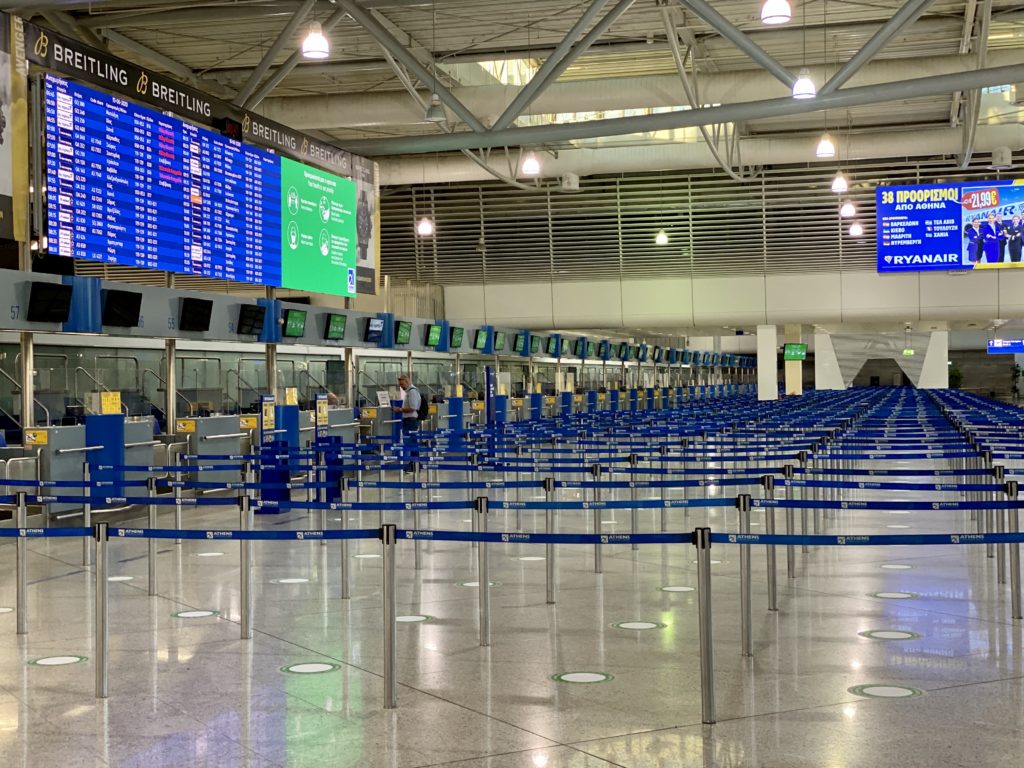
The Athens Airport on June 15, 2020
The Lounge Experience
Entering the Aegean lounge (a place I have been dozens of times), there were some key differences. First was that you can no longer get your coffee-based drink on your own. There is a staff member at the machine to make your drink for you to limit the contact on the machines.
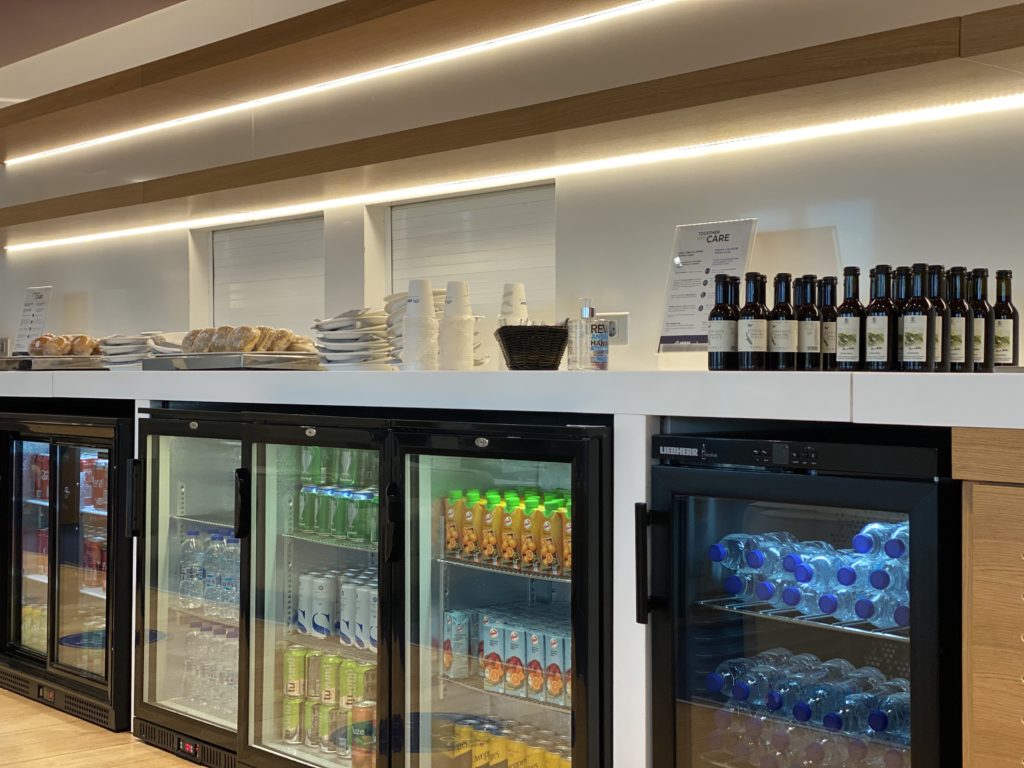
The business class lounge in Athens
As for food, it is only pre-packaged sandwiches, yogurt and similar packaged foods. This means none of the fresh Greek food that is normally on display. But, seating is open like normal and there were a fair amount of people in the lounge for the Monday morning flights.
Boarding the Plane
Boarding the plane, there were no questions about where I was coming from, temperature checks or anything similar. One thing that was present was something that happens with many flights from Greece to Germany – police at the gate checking people that did not look Greek.
This included myself and many other foreigners who were asked for our IDs and asked some basic questions. This is due to the amount of refugees who employ smugglers to provide tickets and fake IDs to leave Greece for Germany. For this reason, we were also met in Frankfurt by German police checking IDs.
One thing that is in effect – passengers are held to a single carry-on item. While that is normally the policy (one carry-on item and one personal item) – and it really gets pushed on Greek flights! – this was really enforced now as another way to limit contact on board. They even told me I needed to do the same in spite of the fact that I was flying business class (and their website says that business class passengers get to have the two bags onboard). I was ready to go with that but a supervisor came over and said I could board as is.
Flying Out of Frankfurt Airport
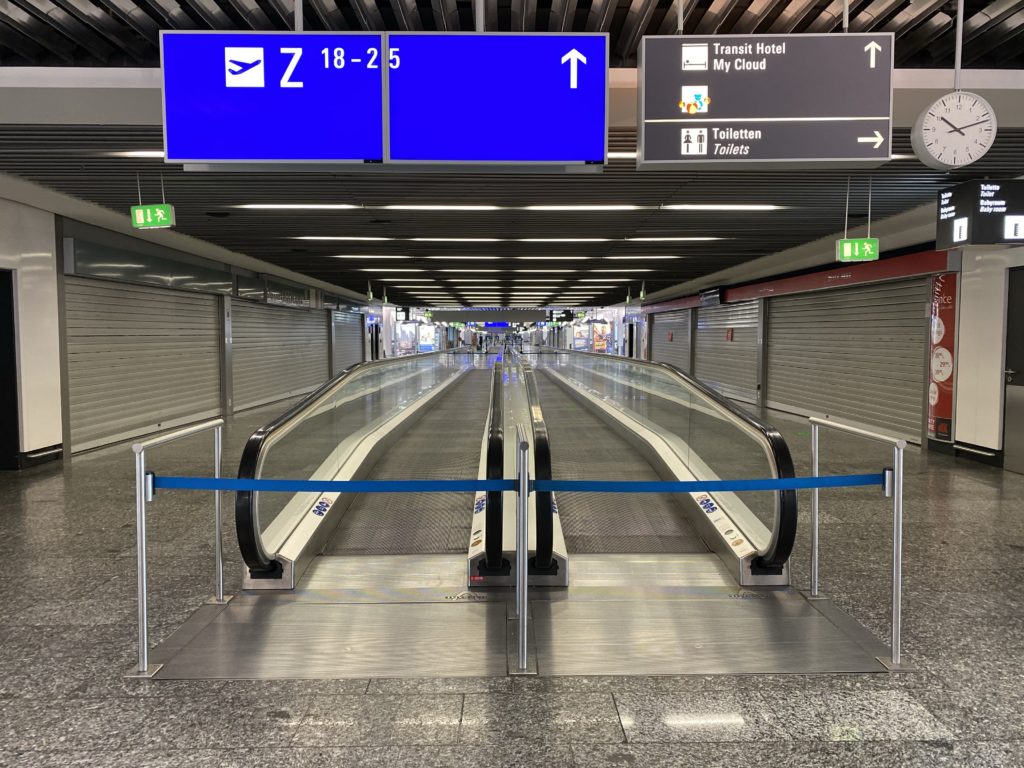
The empty Frankfurt airport
The biggest surprise of the trip was Frankfurt airport. I already did a post on this (definitely check out the photos!) but I have never seen Frankfurt Airport this quiet. It was almost eery.
Due to lounges being closed, I made my way to my gate which meant “leaving” Europe through passport control. There were no questions related to the coronavirus, just a check of my IDs and off I went.
At the gate, they had a security area set up near my gate for all United flights. This was where they did a secondary screening of passengers for all United flights. This was the first time in ages that I did not need secondary screening!
When the time came for ID check, it was a quick look at my passport, a question about how long I had been in Europe and where I had come from and on I went.
Again, no temperature checks were made and no coronavirus-related questions were asked. It was business as usual here – minus the thousands of passengers that were not in the terminals.
Flying to the US
SWISS or United?
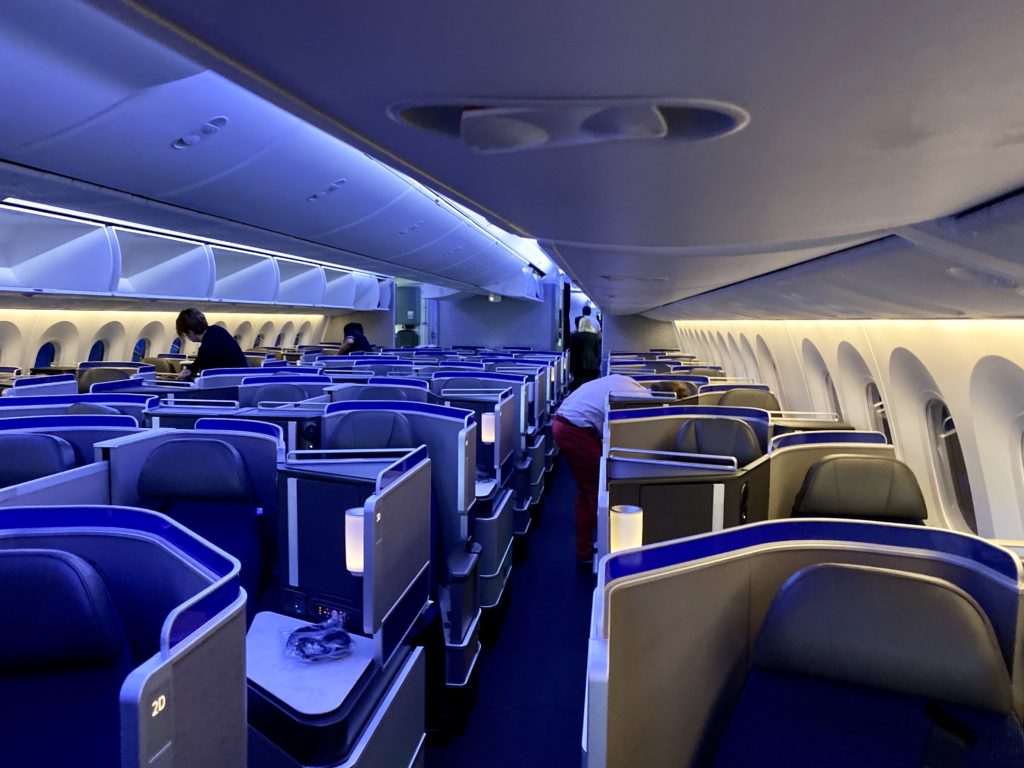
The beautiful United Polaris cabin on the 787-10
I had the choice of flying with SWISS to JFK or United to Newark. While I would normally choose SWISS all day over United, I had heard about many carriers cutting catering so that would eliminate a big reason to choose SWISS (since I consider SWISS catering to be unbelievably good!). But, I ultimate chose United for two reasons – one was that it was the older SWISS business class which is nice but I would prefer to fly the newer Polaris business class. The other reason was that I had to rent a car and had to drive to western NY and Newark would afford me a bit of a time advantage.
Anyway, I think I was quite wrong on my choice for catering choices (another post coming!) but loved the United Polaris seat and space!
On the Flight
Anyway, there were only 60 people on my Boeing 787-10 flight! I was speaking with the flight attendants and they said that it is always lighter going to the US than coming from the US. My guess was that most people who could enter the US probably already have left Europe.
Anyway, before landing, we were given two forms – one for the coronavirus and one for customs. The coronavirus form asked about where I had originated from, if I had experienced any coronavirus symptoms in the last 24 hours, etc. I did not originally fill out the customs form since I have Global Entry (a mistake, I found out later!).
Onboard, everything was kept clean and neat. Catering was served in covered dishes without any coffee, tea, or wine being offered to anyone. The reason given was that they were trying to minimize contact points. Well, apparently SWISS figured out how to do a full service with keeping things sanitary – again, post coming! 🙂
Masks were worn by all except by some of the flight attendants while they were in the galley. But, once a passenger entered, they put their masks back on.
Entering the US
When we landed, a representative came aboard with a message from the CDC. It was about the spread of coronavirus and requested that passengers self-quarantine for 14 days and wear masks when in public places and in closed areas. The whole announcement took just about 3 minutes.
No Global Entry or Mobile Passport
I found out when approaching the passport control area that Global Entry and Mobile Passport had closed a while ago. I think I knew that but had forgotten. So, that meant heading over to the wall to fill out a form I have not filled out in years! But, there were no other flights that had landed around our time so the line was not going to take long.
Temperatures Taken, Forms Collected
Before getting the the passport control windows, we snaked through a line where the first representative checked to make sure we had filled out our coronavirus form. Then, at the end of the line, there were more agents there with thermometers. We had our temperatures checked, forms collected, and that was it.
From there, it was on to passport control where we had a few questions that would normally be asked upon entrance to the US and then we were out of there.
Follow Up
After a few days, I received a phone call from a nurse working with my local county department of public health. They wanted to follow up and ask about my health and any symptoms I may be experiencing. This was followed up with an e-mail with the limit of activities, safe practices, medical care/compliance, and what to do if symptoms develop.
I was a bit surprised that such a form was not given to me or that I was not called about it until 4 days following entering the US. Also, the form referenced staying in quarantine for 14 days “after the date of your last exposure” which sounds like the form was made for people who were exposed to the virus instead of traveling. In my case, I had traveled from one of the safest virus countries in Europe – Greece – and worn a mask the entire time.
Bottom Line – Travel from Europe to the US During Covid-19
Many comparisons (or, rather, contrasts) have been made between how the US has been handling those entering the country vs how Hong Kong/Japan/etc allow people to enter their borders. In this case, it was pretty much travel as normal from origination to destination except for the form and temperature check arriving in the US (of course, with the exception of the lack of people enroute). Even in Europe, there was nothing done at all to check along the way.
But, on my return to Europe, there was not a single check performed upon entering Europe until I arrived in Greece (see this post for more on that). So, in this sense, it appears that both areas are more about trusting their border restrictions and people calling in with symptoms than actual testing.
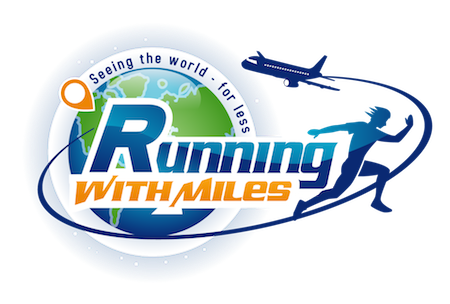
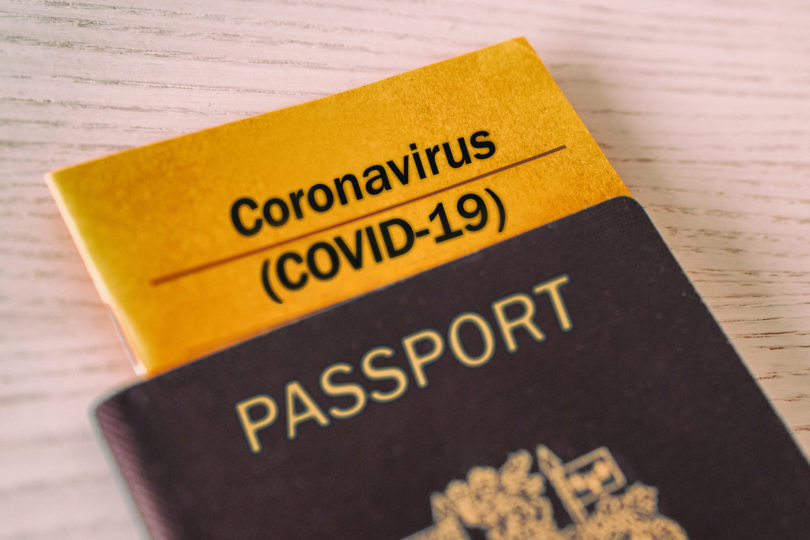
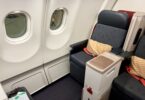
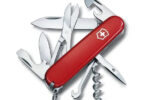
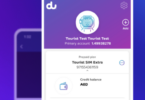

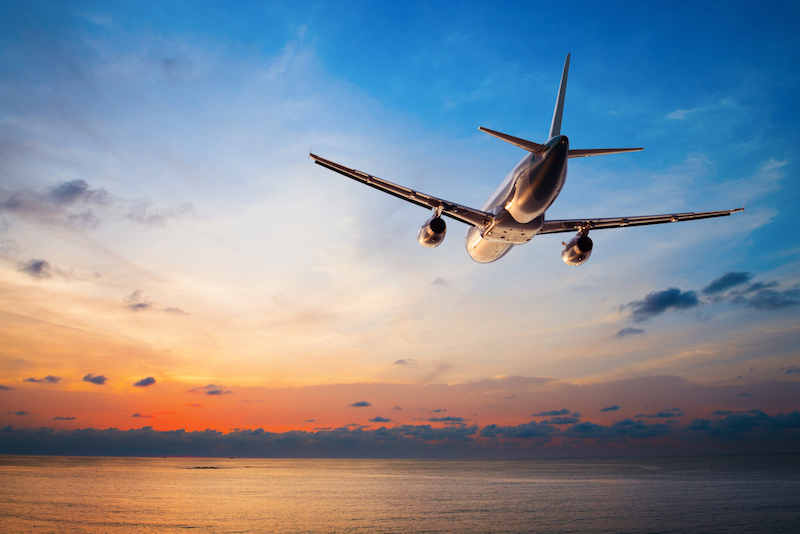


So, do you know if all Global Entry kiosks in all US airports are closed? When I fly back from ATH, I’m flying through JFK.
Do you onow if you need to quarantine fir 2 weeks if you fly usa to Frankfurt?
I am pretty sure that Germany is currently requiring a 2 week quarantine.